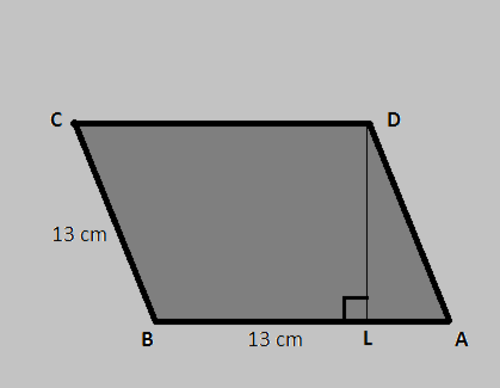Parallelogramatic
Geometry
Level
2

In the given figure, ABCD is a parallelogram. If the area of the parallelogram is 156 sq cm, find the length of AL.
The answer is 5.
This section requires Javascript.
You are seeing this because something didn't load right. We suggest you, (a) try
refreshing the page, (b) enabling javascript if it is disabled on your browser and,
finally, (c)
loading the
non-javascript version of this page
. We're sorry about the hassle.
Area of the parallelogram = 156 sq cm
[Area of a normal parallelogram = b a s e X h e i g h t ]
Base = 13 cm
Height (DL) = B a s e A r e a = 1 3 1 5 6 = 12 cm
DLA is a right- angle triangle.
Hypotenuse (DA) = 13cm
Altitude (DL) = 12 cm
Base (AL) = ??
{According to Pythagoras Theorem}
= ( A l t i t u d e ) 2 + ( B a s e ) 2 = ( H y p o t e n u s e ) 2 [Solving it]
= ( 1 2 ) 2 + ( A L ) 2 = ( 1 3 ) 2
= 1 4 4 + ( A L ) 2 = 1 6 9 [Shifting 144 from L.H.S. to R.H.S.]
= ( A L ) 2 = 1 6 9 − 1 4 4
= ( A L ) 2 = 2 5 [Square root on both sides]
= √ ( A L ) 2 = √ 2 5
= √ A L X A L = √ 5 X 5
= A L = 5 c m = A n s \